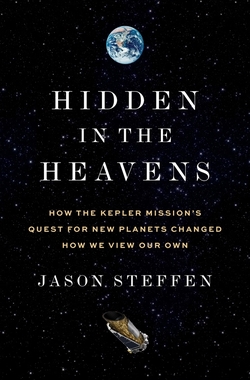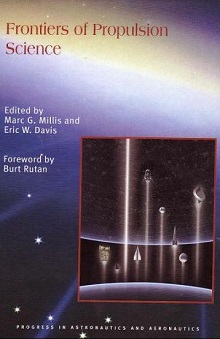Although I often see the exoplanet WASP-39b referred to as a ‘hot Saturn,’ and sometimes a ‘hot Jupiter,’ the terms don’t really compute. This is a world closer to Saturn than Jupiter in mass, but with a radius somewhat larger than that of Jupiter. Hugging its G-class primary in a seven million kilometer orbit, it completes a circuit every four days. The system is about 700 light years from us in Virgo, and to my mind WASP-39b is a salutary reminder that we can carry analogies to the Solar System only so far. Because we have nothing in our system that remotely compares to WASP-39b. Let’s celebrate the fact that in this exoplanet we have the opportunity to study a different kind of planet, and remind ourselves of how many worlds we’re finding that are not represented by our own familiar categories. I imagine one day we'll have more descriptive names for what we now call, by analogy, 'super-Earths' and 'sub-Neptunes' as well. I've seen WASP-39b referred to in the literature as a...
Interstellar Probe: Prospects for ESA Technologies
The Interstellar Probe concept being developed at Johns Hopkins Applied Physics Laboratory is not alone in the panoply of interstellar studies. We've examined the JHU/APL effort in a series of articles, the most recent being NASA Interstellar Probe: Overview and Prospects. But we should keep in mind that a number of white papers have been submitted to the European Space Agency in response to the effort known as Cosmic Vision and Voyage 2050. One of these, called STELLA, has been put forward to highlight a potential European contribution to the NASA probe beyond the heliosphere. Image: A broad theme of overlapping waves of discovery informs ESA's Cosmic Vision and Voyage 2050 report, here symbolized by icy moons of a gas giant, an temperate exoplanet and the interstellar medium itself, with all it can teach us about galactic evolution. Among the projects discussed in the report is NASA's Interstellar Probe concept. Credit: ESA. Remember that Interstellar Probe (which needs a catchier...
KOBE: The Hunt for Habitable Zone K-dwarf Planets
From the standpoint of producing interesting life, K-dwarf stars look intriguing. Our G-class Sun is warm and cozy, but its lifetime is only about 10 billion years, while K-dwarfs (we can also call them orange dwarfs) can last up to 45 billion years. That's plenty of time for evolution to work its magic, and while G-stars make up only about 6 or 7 percent of the stars in the galaxy, K-dwarfs account for three times that amount. We have about a thousand K-dwarfs within 100 light years of the Solar System. When Edward Guinan (Villanova University) and colleague Scott Engle studied K-dwarfs in a project called "GoldiloKs," they measured the age, rotation rate, and X-ray and far-ultraviolet radiation in a sampling of mostly cool G and K stars (see Orange Dwarfs: 'Goldilocks' Stars for Life?). Their work took in a number of K-stars hosting planets, including the intriguing Kepler-442, which has a rocky planet in the habitable zone. Kepler-442b is where we'd like it to be in terms of...
Simultaneous Growth of Planet & Star?
I’m interested in a new paper on planet formation, not only for its conclusions but its methodology. What Amy Bonsor (University of Cambridge) and colleagues are drawing from their data is how quickly planets can form. We’ve looked numerous times in these pages at core accretion models that explain the emergence of rocky worlds and gravitational instability models that may offer a way of producing a gas giant. But how long after the formation of the circumstellar disk do these classes of planets actually appear? A planet like the Earth poses fewer challenges than a Jupiter or Saturn. Small particles run into each other within the gas and dust disk surrounding the young star, assembling planets and other debris through a process of clumping that eventually forms planetesimals that themselves interact and collide. Thus core accretion: The planet ‘grows’ in ways that are readily modeled and can be observed in disks around other stars. But the gas giants still pose problems. Core...
Super Earths/Hycean Worlds
Dave Moore is a Centauri Dreams regular who has long pursued an interest in the observation and exploration of deep space. He was born and raised in New Zealand, spent time in Australia, and now runs a small business in Klamath Falls, Oregon. He counts Arthur C. Clarke as a childhood hero, and science fiction as an impetus for his acquiring a degree in biology and chemistry. Dave has kept up an active interest in SETI (see If Loud Aliens Explain Human Earliness, Quiet Aliens Are Also Rare) as well as the exoplanet hunt, and today examines an unusual class of planets that is just now emerging as an active field of study. by Dave Moore Let me draw your attention to a paper with interesting implications for exoplanet habitability. The paper is “Potential long-term habitable conditions on planets with primordial H–He atmospheres,” by Marit Mol Lous, Ravit Helled and Christoph Mordasini. Published in Nature Astronomy, this paper is a follow-on to Madhusudhan et al’s paper on Hycean...
Stapledon’s Hawk
Walking along dark streets this morning, as autumn leaves gusted past under a deepening lunar eclipse, I realized that there was a reason for my recent foray into what I called ‘Stapledon thinking.’ The reason: Landscape by moonlight. What these early walks remind me of is the beginning of Olaf Stapledon’s 1937 novel Star Maker, in which the narrator takes a similar walk in the darkness, musing on his personal relationships as well as his place in the larger structure of the cosmos (I’m using the word ‘structure’ there deliberately, as we’ll see later). The narrator walks to a hill overlooking houses below, somewhere near the sea. There is a lighthouse. He sits down on the heather. And now ‘the hawk-flight of imagination,’ in Stapledon’s lovely phrase, takes over. An astral journey begins: Imagination was now stimulated to a new, strange mode of perception. Looking from star to star, I saw the heaven no longer as a jeweled ceiling and floor, but as depth beyond flashing depth of...
In Person or Proxy to Mars and Beyond?
Larry Klaes is well known in these parts for his extraordinary reviews of classic science fiction films. Today, however, he steps back from cinema to consider how we will expand into space. The crews on our deep space missions will doubtless be a lot different than some of those old black-and-white movies would suggest. Just how will our species adapt to the environments it will soon be exploring? There's nothing quite so lush as our own blue and green planet, yet the imperative to move ever outward is a driver for our species. Mars is a case in point, but the long-range picture is that we're looking off-planet and already pondering destinations beyond the Solar System. Re-shaping our expectations will be a part of what drives the scientists and engineers who equip us for the next steps. An earlier version of this essay was published by The Mars Society. by Larry Klaes In 1972, singer, pianist, and composer Sir Elton Hercules John (born 1947) released a song titled "Rocket Man". This...
A New Trio of ‘Twilight’ Asteroids
I have further thoughts on 'Stapledon thinking,' as discussed in the last post, but my second piece on the topic isn't ready just yet, and in any case I want to give a quick nod to a topic we looked at a few months back, the discovery and analysis of Near Earth Objects that orbit between the Sun and the orbit of Earth. So far we haven't found many of these 'twilight objects,' but the attempts to find them continue. As witness current work with an exceptional instrument. The Dark Energy Camera is a wide-field CCD imager, mounted on a 4-meter telescope at Cerro Tololo (Chile), that was designed for the Dark Energy Survey. The latter mapped hundreds of millions of galaxies to look for insights into the structure of the cosmos. The DES ended in 2019, but DECam continues to produce data that have helped us find fascinating objects like 2015 TG387, a dwarf planet on an extreme orbit that takes it to aphelion at 1000 AU, with a closest solar approach of 65 AU. DECam has also found 12 new...

